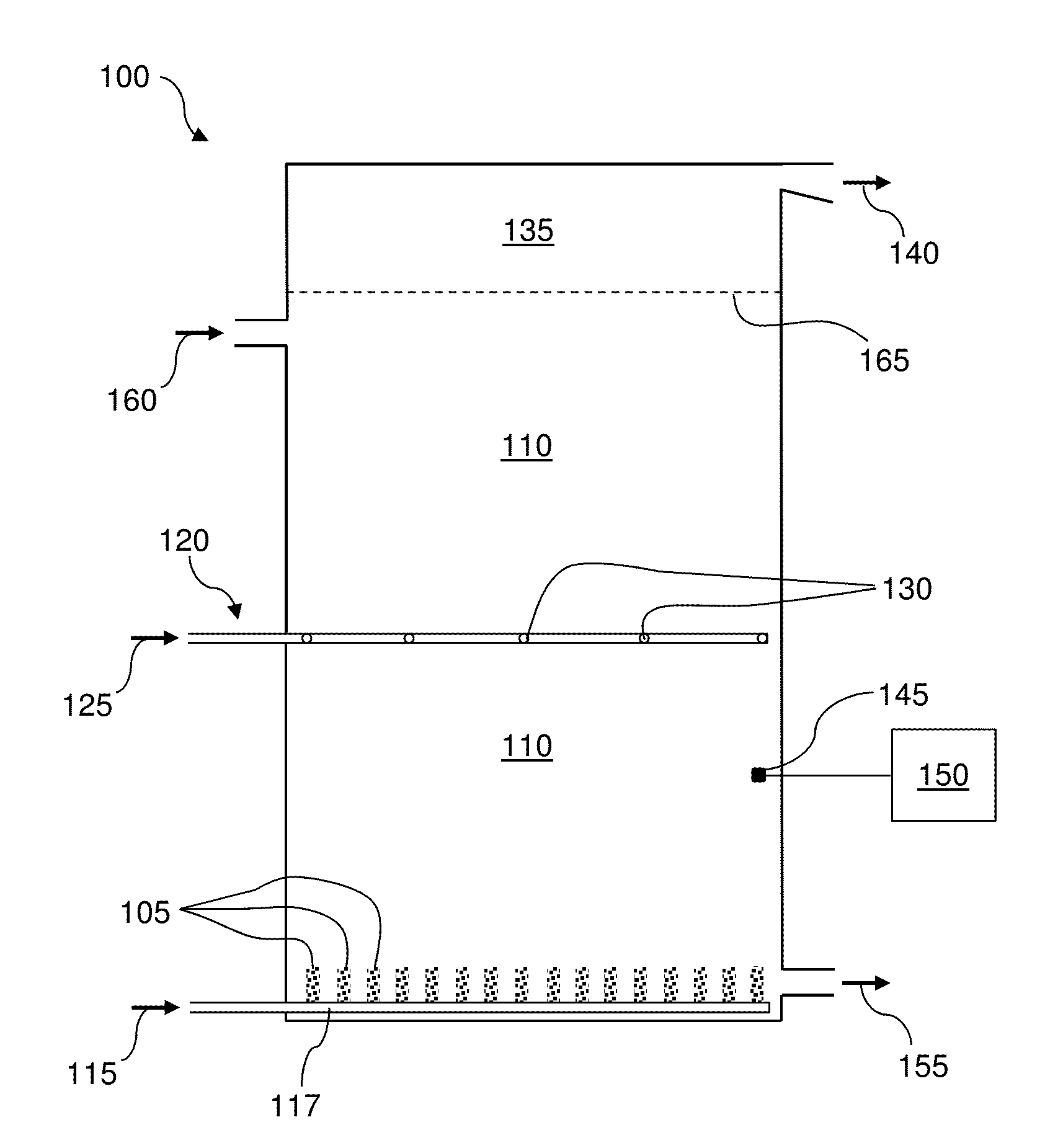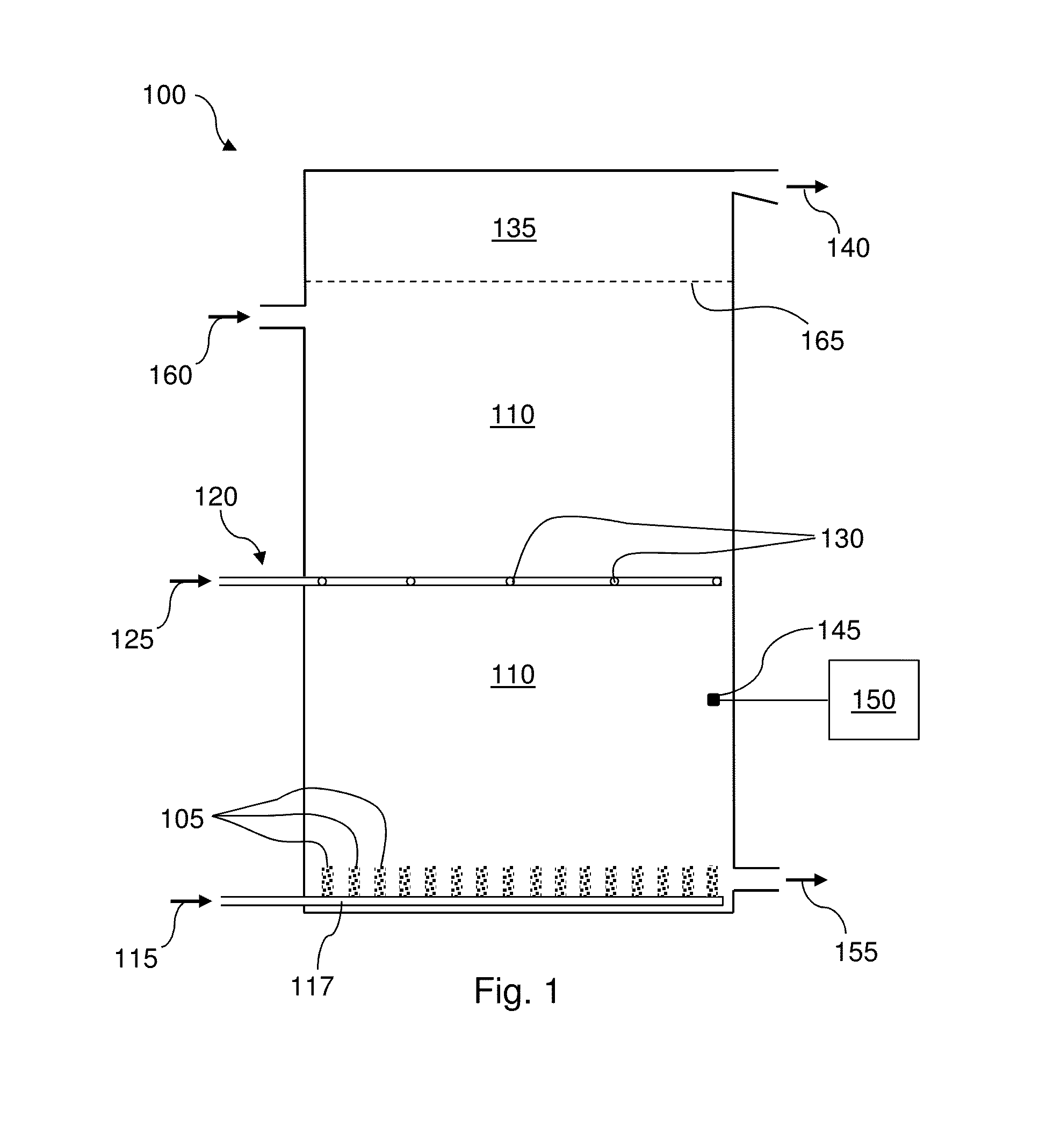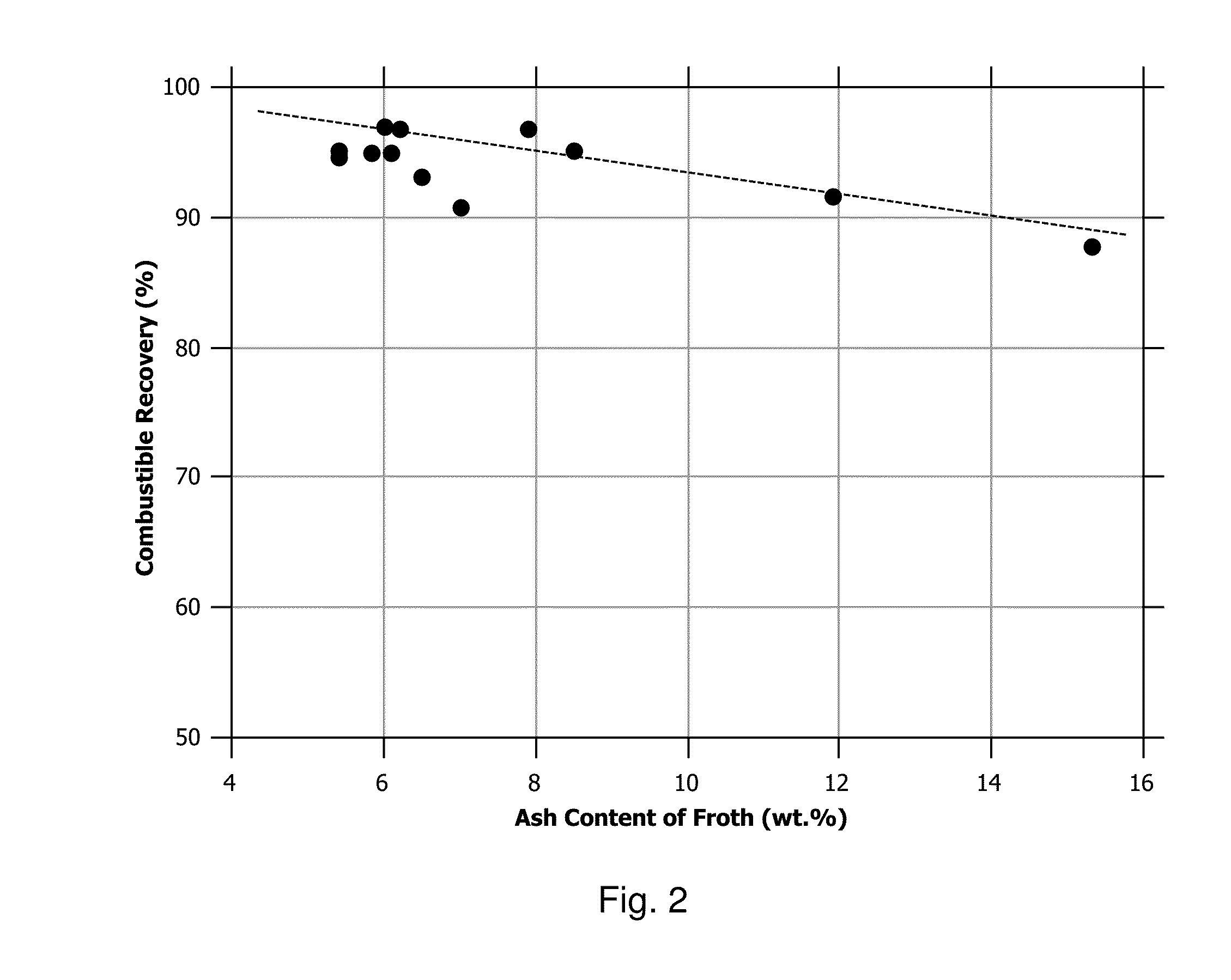Flotation separation of fine coal particles from ash-forming particles
a technology of ash-forming particles and flotation separation, which is applied in the direction of flotation, liquid carbonaceous fuels, fuels, etc., can solve the problems of increasing the processing cost, no current commercial process to recover and sell particles, and increasing the cost of coal processing. , to achieve the effect of reducing the bubble size, increasing the natural hydrophobicity of the coal particle surface, and reducing the size of the bubbl
- Summary
- Abstract
- Description
- Claims
- Application Information
AI Technical Summary
Benefits of technology
Problems solved by technology
Method used
Image
Examples
example 1
Measuring Moisture Content and Ash-Forming Component Content of a Coal Sample
[0112]The moisture content and ash-forming component content of any coal sample, in this case the slurry, were obtained by following the procedure outlined in ASTM Standard D7582—Standard Test Methods for Proximate Analysis of Coal and Coke by Macro Thermogravimetric Analysis and ASTM Standard D3173-11—Method for Moisture in the Analysis Sample of Coal and Coke.
[0113]For moisture, the mass of the slurry was measured. The slurry was then dried in an oven at 110° C. under flowing, dry air for one to two hours. The mass of the sample was obtained after complete drying. The mass remaining after drying is the solid content of the sample, and the mass lost is the moisture content of the material. Wt. % solid and wt. % moisture are calculated for the sample. Wt. % solids content=mass wet sample / mass dry sample. Wt. % moisture=100%−wt. % solids sample.
[0114]For quantifying ash-forming component content of the sampl...
example 2
High Shear or High Energy Slurry Preparation and Vibratory Screen Deslime Unit
[0116]Regular un-milled aqueous slurry is made from coal fines by introducing the coal fines into a paddle mixer. The paddle homogenizes the sample and the moisture content is obtained. Water is added to the coal fines to reduce the solids content to between 45 wt. % and 50 wt. % solids. While the paddle mixers are still turning, high energy mixers are also turned on for up to two minutes. The high shear mixers break apart clumps and agglomerations of coal and ash-forming component particles creating a slurry of discrete coal and ash-forming component particles.
[0117]High energy mixing was initially developed using lab-scale equipment by testing shear mixing. First, an aqueous slurry of coal fines was made using a 0.13 m3 Hobart paddle mixer with a 0.42 m diameter paddle. Tip speed is a measure of the velocity of the tip of a blending element and is used to characterize the mixing action of a turning eleme...
example 3
Milling Circuit to Prepare a Milled Slurry
[0131]The retained particles on the 0.7 mm and 1.4 mm screens of the vibratory screen deslime unit were processed through a wet mill to reduce their size to 0.3 mm or below. Particles with an average particle size less than 0.15 mm have been produced. In some embodiments, the average particle size of the milled slurry was less than 0.04 mm. In other embodiments, the average particle size of the milled slurry was 16.5 μm. The milled slurry preferably has no particles greater than about 200 μm. A target average particle size can be produced by varying the exit dimensions of the mill, residence time in the mill, media size in the mill, and media volume in the mill.
[0132]Ash-forming component particles are entrapped in coal particles. The entrapped ash-forming component particles have an average particle size on the range of less than 0.01 mm. In one instance the average particle size of the ash-forming component particles was measured to be of ...
PUM
| Property | Measurement | Unit |
|---|---|---|
| particle size | aaaaa | aaaaa |
| particle size | aaaaa | aaaaa |
| particle size | aaaaa | aaaaa |
Abstract
Description
Claims
Application Information
 Login to View More
Login to View More - R&D
- Intellectual Property
- Life Sciences
- Materials
- Tech Scout
- Unparalleled Data Quality
- Higher Quality Content
- 60% Fewer Hallucinations
Browse by: Latest US Patents, China's latest patents, Technical Efficacy Thesaurus, Application Domain, Technology Topic, Popular Technical Reports.
© 2025 PatSnap. All rights reserved.Legal|Privacy policy|Modern Slavery Act Transparency Statement|Sitemap|About US| Contact US: help@patsnap.com



